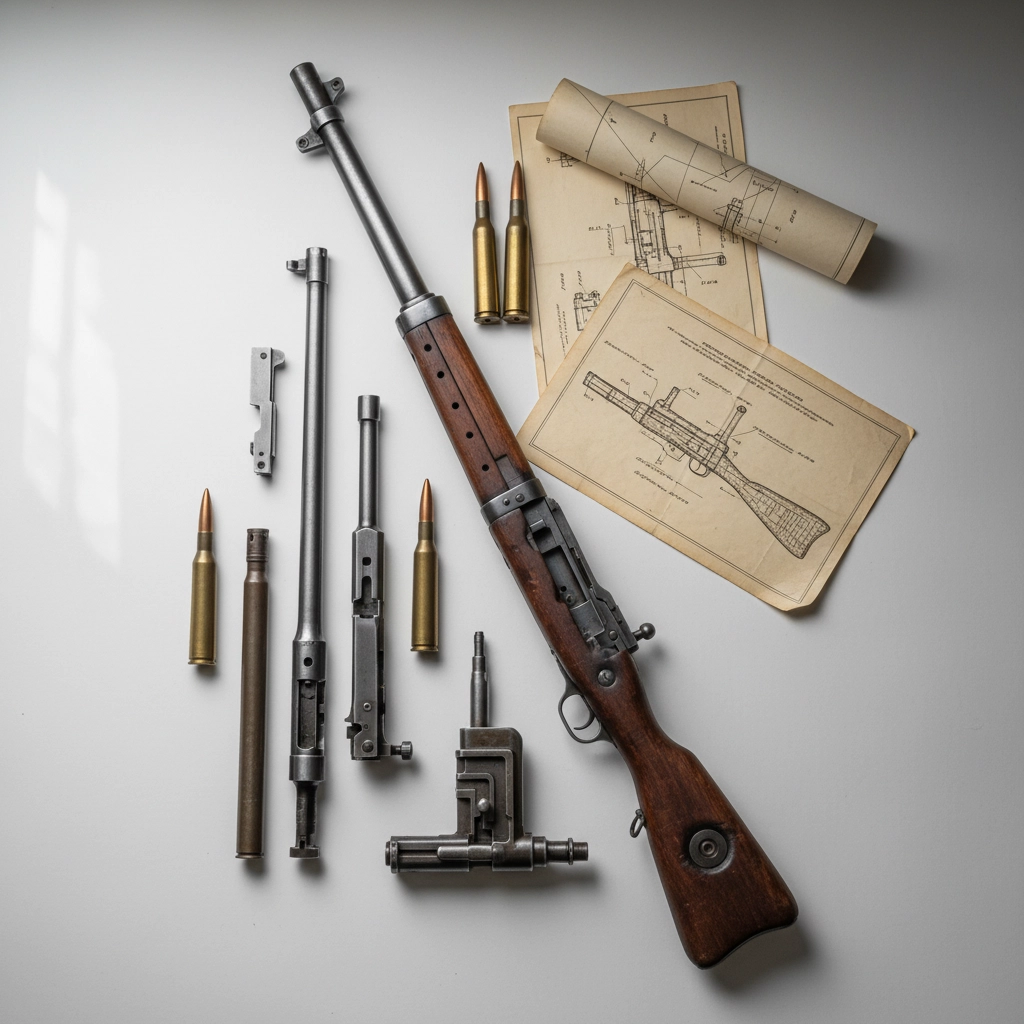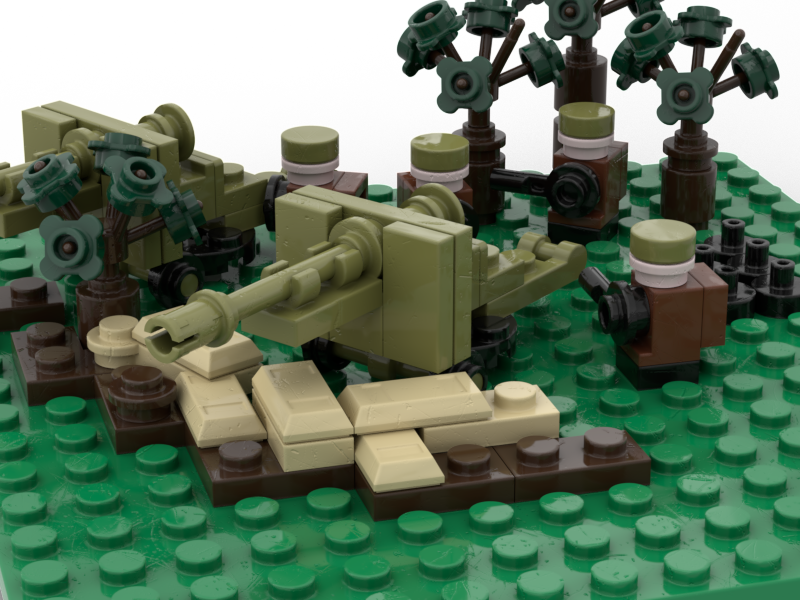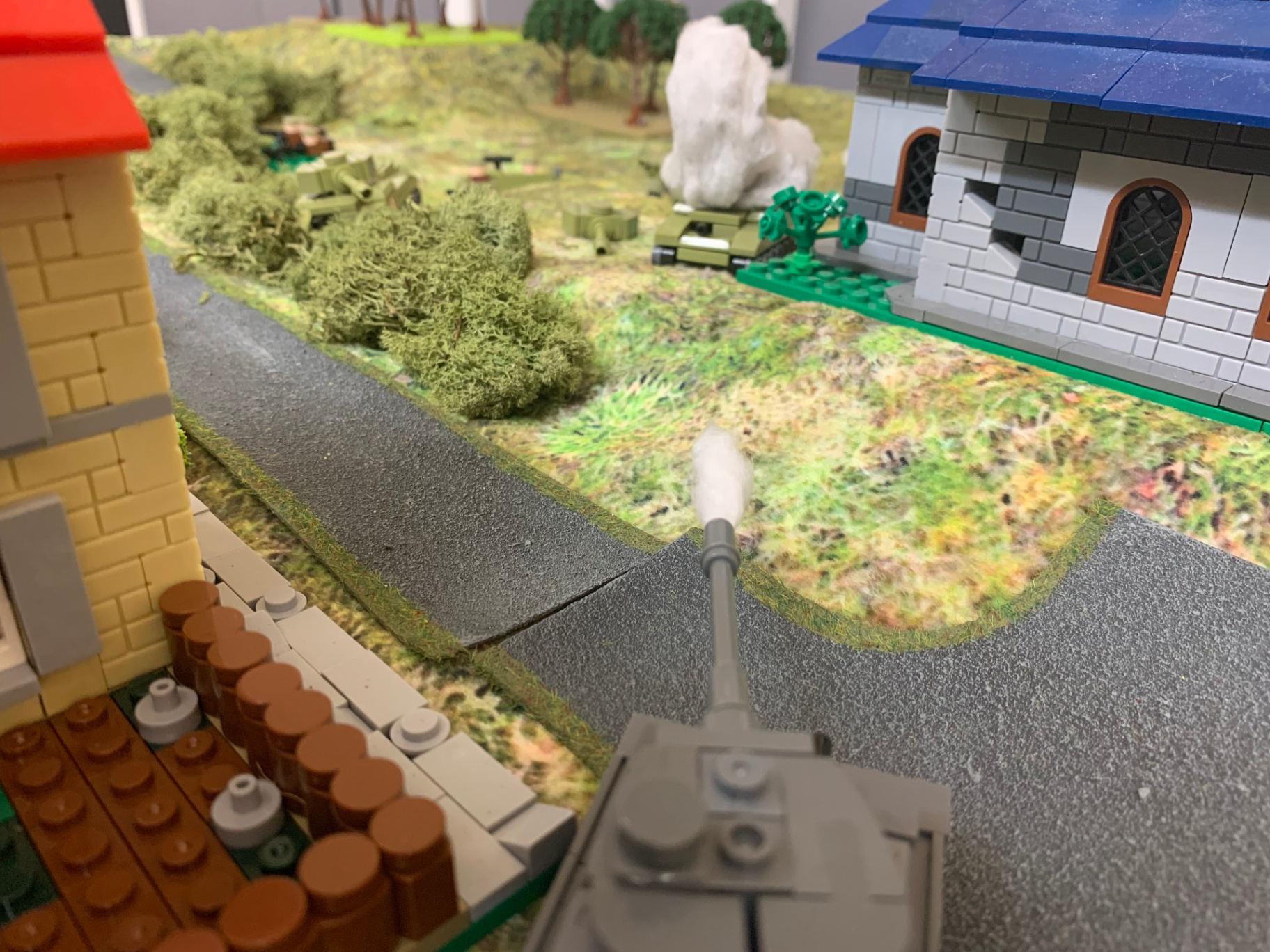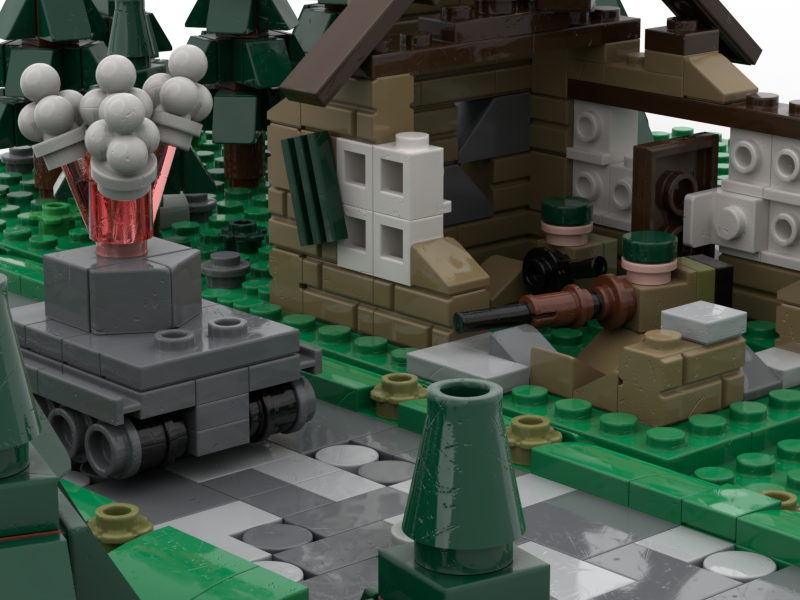The Soviet Union's anti-tank rifles represented one of the most fascinating defensive innovations of World War II. Born from desperate necessity following the catastrophic losses of 1941, these weapons became critical components in the Red Army's evolving anti-armor doctrine. The two primary models: the semi-automatic PTRS-41 and single-shot PTRD-41: fired the powerful 14.5×114mm cartridge and proved surprisingly effective against German armor throughout the Eastern Front campaigns.
Development and Design Origins
The development of Soviet anti-tank rifles emerged from the harsh realities of Operation Barbarossa. When German forces invaded in June 1941, the Red Army suffered massive losses of conventional anti-tank artillery, creating an urgent need for portable anti-armor weapons that could be manufactured quickly and deployed at the infantry level.

Two brilliant designers answered this call: Sergei Gavrilovich Simonov and Vasily Degtyaryov. Simonov developed the PTRS-41 by scaling up elements from his existing 7.62×54R self-loading rifle designs, creating a gas-operated semi-automatic weapon capable of delivering sustained fire. Meanwhile, Degtyaryov independently created the PTRD-41, a simpler single-shot bolt-action design that prioritized reliability and ease of manufacture.
The selection of the 14.5×114mm cartridge proved crucial to both weapons' effectiveness. Soviet engineers had experimented with various armor-piercing rounds between the wars, finding the existing 12.7×108mm insufficient for penetrating increasingly thick German armor. The new cartridge featured tungsten-core armor-piercing projectiles that achieved a muzzle velocity of 1,013 m/s (3,320 ft/s).
Technical Specifications and Variants
PTRS-41 Semi-Automatic Rifle:
- Length: 2,108mm (83 inches)
- Weight: 20.3kg (45 lbs)
- Feed system: 5-round clip
- Operation: Gas-operated, tilting bolt
- Effective range: 300-500 meters
PTRD-41 Single-Shot Rifle:
- Length: 2,000mm (79 inches)
- Weight: 17.3kg (38 lbs)
- Operation: Bolt-action, single-shot
- Simpler mechanism with fewer moving parts
- Higher reliability in adverse conditions
Both weapons featured similar penetration capabilities: 40mm of armor plate at 100 meters, sufficient to defeat the side armor of Panzer III and IV tanks at close range. Later testing revealed they could also penetrate the lower hull sides of the formidable Panzer V "Panther."
Strengths and Combat Advantages
✔ Superior Penetration Power
The 14.5mm tungsten-core rounds delivered exceptional armor-piercing performance for a man-portable weapon. Beyond direct penetration, the rifles proved highly effective against vulnerable tank components including tracks, road wheels, gun barrels, vision ports, and engine compartments.
✔ Tactical Versatility
Soviet forces discovered multiple applications beyond conventional anti-tank work. Anti-tank rifle teams effectively targeted German recovery vehicles, repair personnel, and logistics units, creating cascading effects that disabled enemy operations far beyond the immediate battlefield impact.
✔ Rapid Production and Deployment
The weapons' relatively simple construction enabled mass production. By 1943, Soviet manufacturers had produced over one million anti-tank rifles, representing a 416% increase in provision since 1942. This massive deployment created a comprehensive anti-tank defense network across Soviet forces.

✔ Semi-Automatic Advantage
The PTRS-41's gas-operated mechanism allowed rapid follow-up shots, crucial for engaging multiple targets or delivering sustained harassment fire against enemy armor formations.
Weaknesses and Operational Limitations
❌ Declining Anti-Tank Effectiveness
As German armor technology evolved, the rifles' penetration capabilities became increasingly inadequate against frontal armor. Late-war German tanks with thick frontal plates proved virtually immune to 14.5mm fire except at point-blank range.
❌ Mechanical Reliability Issues
The PTRS-41's sophisticated gas-operated mechanism suffered from a critical design flaw: the powerful 14.5mm cartridge produced significant residue that frequently blocked the gas port, causing jams under battlefield conditions. This reliability problem made the simpler PTRD-41 more practical despite its lower rate of fire.
❌ Extreme Operator Vulnerability
Anti-tank rifle teams faced extraordinary danger, requiring close-range engagement (typically under 300 meters) to achieve penetration. This proximity exposed crews to enemy small arms fire, artillery, and tank main guns.
❌ Logistical Burden
Both weapons were exceptionally heavy and cumbersome, requiring dedicated two-man crews for effective deployment. The ammunition's size and weight further complicated supply operations in fluid combat situations.
Tactical Implementation and Doctrine
The Soviet military integrated anti-tank rifles into a sophisticated "anti-tank defense in depth" strategy. Infantry regiments typically fielded dedicated anti-tank rifle companies consisting of 27 two-man teams, while battalions established concentrated anti-tank positions with approximately 20 rifles per company.
Rather than attempting frontal engagements with German armor, Soviet doctrine positioned heavy anti-tank guns to blunt direct assaults while light anti-tank weapons and rifles targeted vulnerable flanks and rear aspects. This coordinated approach maximized the rifles' effectiveness while minimizing their inherent limitations.

Anti-tank rifle teams operated in carefully prepared positions, often incorporating natural terrain features or constructed fortifications. The weapons' long range allowed engagement from concealed positions, though effective penetration required considerably closer ranges than maximum ballistic capability.
Notable Battles and Combat Stories
The Siege of Stalingrad: Pavlov's House
The most celebrated deployment of anti-tank rifles occurred during the Battle of Stalingrad, where Sergeant Yakov Pavlov earned legendary status defending a strategic apartment building. Pavlov's defenders mounted PTRS-41 rifles on rooftops throughout the ruined city, creating devastating crossfire zones against German armor.
These rooftop positions proved exceptionally effective in urban combat, as the rifles could penetrate the thin armor protecting tank turret tops when German Panzers operated in close-quarter street fighting. The unconventional vertical employment of anti-tank rifles demonstrated tactical innovation born from desperate circumstances.
Operation Bagration: Mobile Defense
During the massive Soviet offensive in Belorussia (1944), anti-tank rifle teams provided crucial overwatch for advancing infantry formations. Their ability to neutralize German armored cars, half-tracks, and light tanks proved invaluable in maintaining offensive momentum against German delaying actions.


German Countermeasures
The effectiveness of Soviet anti-tank rifles prompted German tactical adaptations. In 1943, German forces introduced "Schürzen" (armor skirts) specifically to defeat anti-tank rifle penetration of vulnerable side armor. This technological response demonstrates the significant impact these weapons achieved on German operational planning.
Strategic Impact and Legacy
The psychological effect of anti-tank rifles extended far beyond their direct military impact. German tank crews developed heightened awareness of infantry anti-tank capabilities, influencing tactical decisions and reducing the aggressive employment of armor in close infantry support roles.
Soviet anti-tank rifles created a defensive framework that forced German armor to operate at greater distances from infantry positions, reducing the effectiveness of combined arms coordination and contributing to the gradual shift in tactical initiative on the Eastern Front.
Post-War Service and Modern Applications
Following Germany's defeat, both rifle types saw continued service in numerous conflicts. Chinese and North Korean forces employed them during the Korean War, while various insurgent groups utilized captured weapons in subsequent regional conflicts.
Remarkably, these weapons have reappeared in contemporary warfare. During the current conflict in Ukraine, some militia units have deployed PTRS-41 rifles against modern light armored vehicles, occasionally using original World War II-vintage ammunition that remains functional after eight decades.
The enduring service of these weapons demonstrates the fundamental soundness of their design concept: a portable, powerful anti-armor weapon that fills the capability gap between small arms and dedicated anti-tank artillery.
For wargaming enthusiasts interested in recreating these dramatic Eastern Front engagements, BricksKrieg offers authentic WWII tank models and tactical terrain pieces that capture the intensity of these historic battles without requiring paint or glue.

